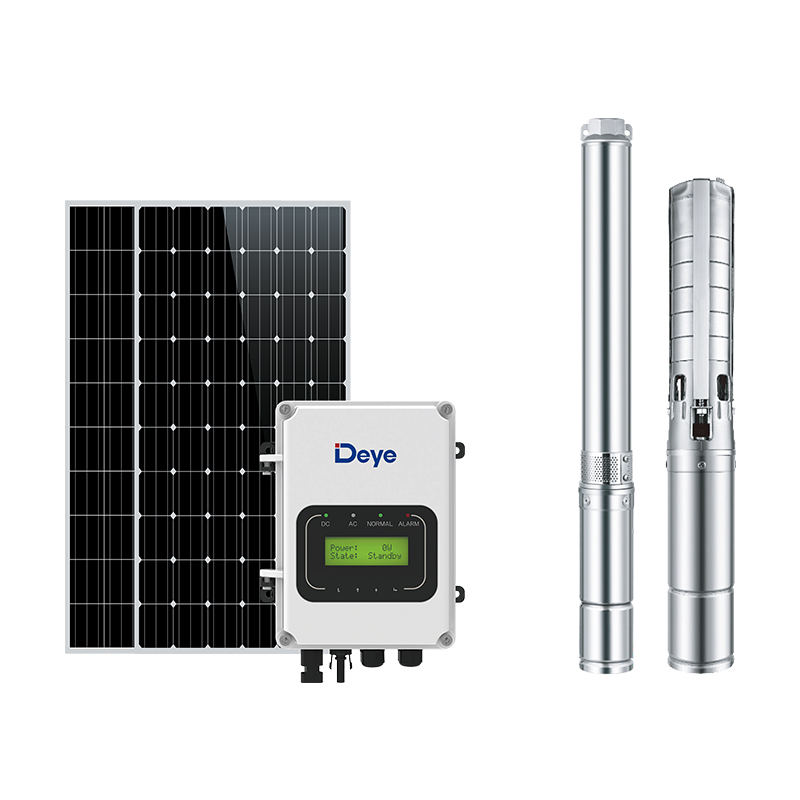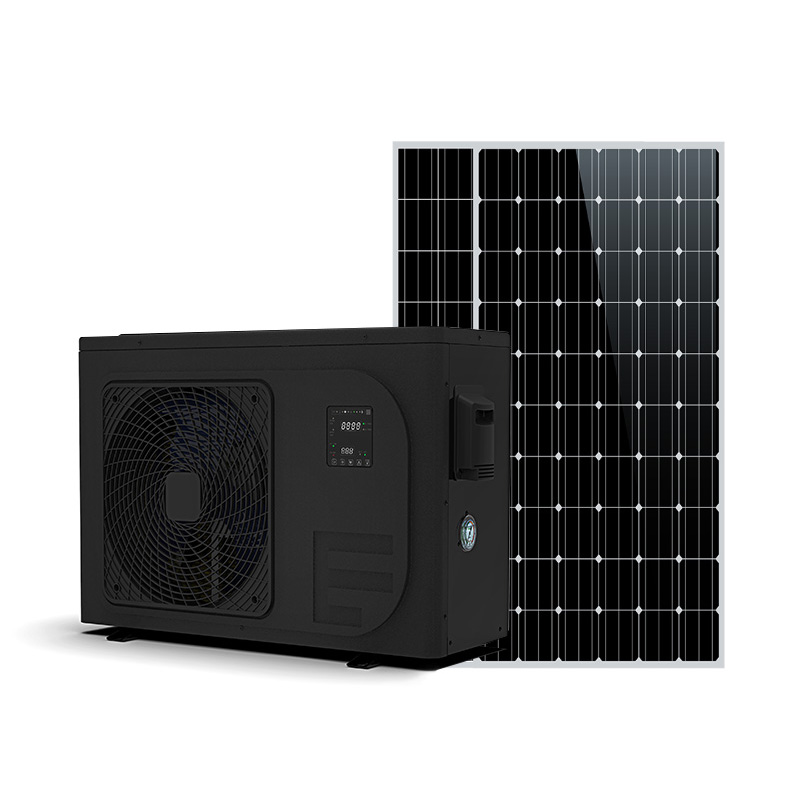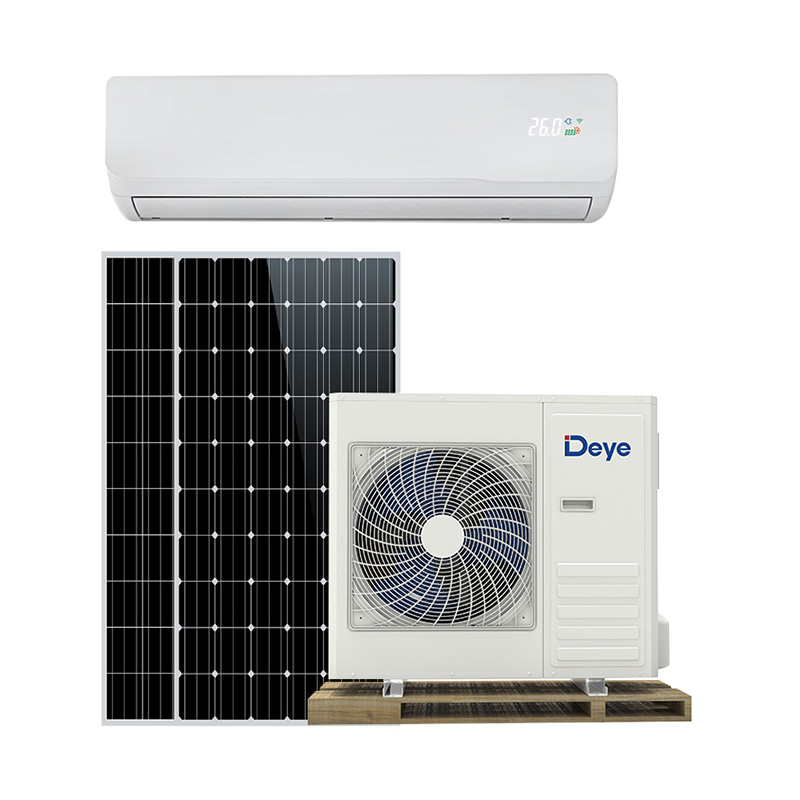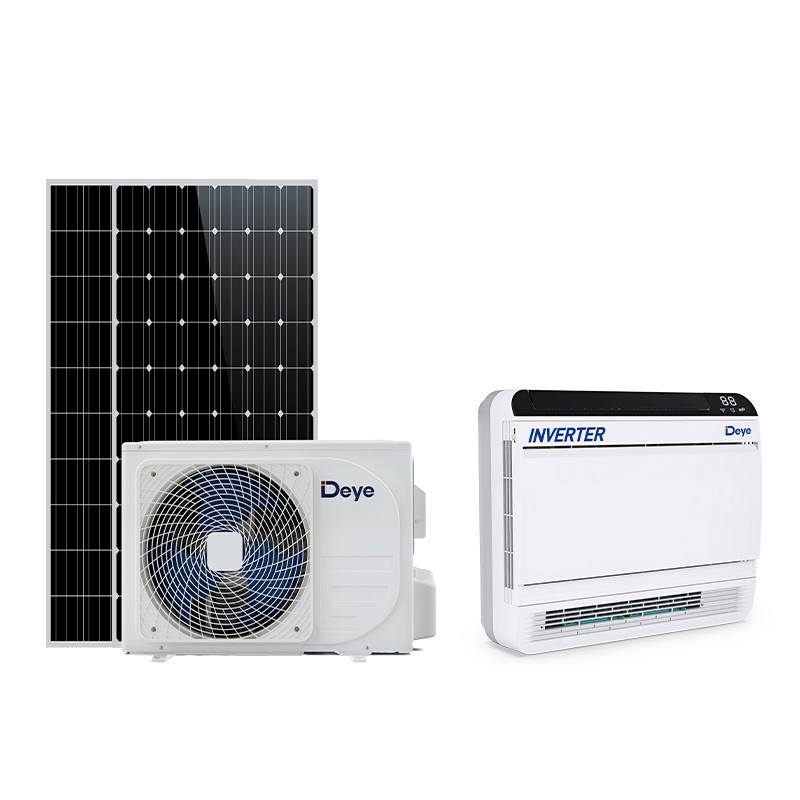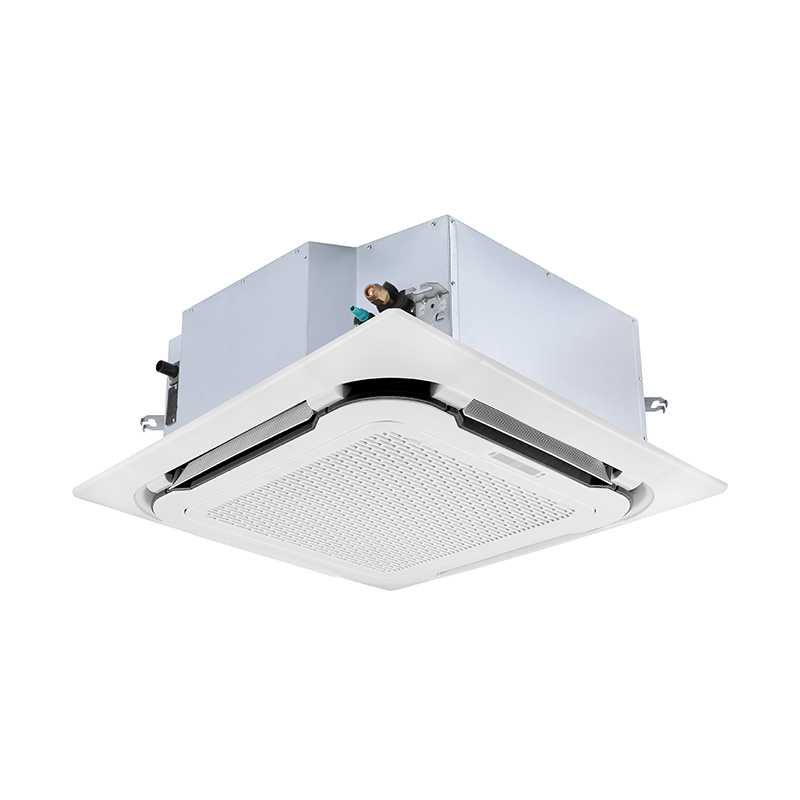Chức năng tự làm sạch của Máy điều hòa không khí cửa sổ mặt trời ACDC lai là một điểm khác biệt chính với điều hòa không khí truyền thống. Mục tiêu cốt lõi của công nghệ này là loại bỏ bụi, nấm mốc và các vi sinh vật khác khỏi vây bay hơi, do đó đảm bảo hiệu quả làm mát, cải thiện chất lượng không khí và kéo dài tuổi thọ của đơn vị.
1. Công nghệ loại bỏ bụi đóng băng
Công nghệ này sử dụng khả năng làm mát vốn có của máy điều hòa không khí. Khi chế độ tự làm sạch được kích hoạt, hệ thống trước tiên vận hành máy nén ở mức tải cao, nhanh chóng giảm nhiệt độ vây bay hơi dưới mức đóng băng. Nước trên vây ngưng tụ vào băng, đóng băng bất kỳ bụi và bụi bẩn nào. Quá trình này, giống như "chân không đóng băng", khóa các chất gây ô nhiễm trong băng.
2. Công nghệ tan chảy và xả nước
Sau khi quá trình đóng băng hoàn tất, hệ thống sẽ tự động chuyển sang chế độ nóng chảy băng. Bằng cách sưởi ấm hoặc các phương tiện khác, nhiệt độ vây được nâng lên, làm tan chảy băng vào nước. Nước tan chảy này chảy xuống vây, rửa sạch bụi bẩn, bụi và vi khuẩn bị đóng băng trước đó. Chất thải sau đó được thải ra ngoài trời thông qua ống thoát nước. Quá trình này có hiệu quả cao và thân thiện với môi trường, không cần làm sạch hóa chất.
3. Công nghệ sấy nhiệt độ cao
Để ngăn ngừa nấm mốc phát triển lại trên vây được rửa, hệ thống bước vào giai đoạn sấy cuối cùng. Thông thường, máy nén tiếp tục chạy ở tốc độ thấp hoặc quạt làm bay hơi bất kỳ độ ẩm còn lại từ vây. Một số mô hình cao cấp sử dụng hệ thống sưởi điện hoặc bơm nhiệt chu kỳ ngược để tăng nhiệt độ vây lên mức đủ cao để tiêu diệt vi khuẩn và nấm mốc, loại bỏ hoàn toàn ô nhiễm thứ cấp. Ba bước này được kết nối với nhau, tạo thành một vòng kín hoàn chỉnh, vật lý, tự làm sạch.
Phân tích hiệu quả: Chìa khóa hoạt động thời tiết lạnh
Phân rã là rất quan trọng đối với nhiều máy điều hòa không khí AC/DC lai, đặc biệt là trong mùa đông lạnh hoặc trong môi trường có độ ẩm cao. Khi hoạt động ở chế độ bơm nhiệt, thiết bị ngưng tụ ngoài trời (hoạt động như thiết bị bay hơi) đạt đến nhiệt độ dưới mức đóng băng, khiến độ ẩm trong không khí hình thành sương giá trên bề mặt của nó, ảnh hưởng nghiêm trọng đến hiệu quả trao đổi nhiệt.
1. Cảm biến rã đông thông minh
Phương pháp rã đông truyền thống thường dựa trên thời gian và không hiệu quả. Mặt khác, điều hòa không khí năng lượng mặt trời lai sử dụng nhiều cảm biến để ra quyết định thông minh. Cảm biến nhiệt độ và áp suất theo dõi nhiệt độ vây ngoài trời và áp suất hệ thống trong thời gian thực. Khi nhiệt độ vây giảm xuống dưới ngưỡng đặt trước và áp suất hệ thống dao động bất thường (thường là do sương giá), hệ thống xác định rằng chế độ rã đông là cần thiết.
2. Chuyển đổi chế độ chu kỳ
Sau khi xác định rã đông, hệ thống ngay lập tức chuyển sang chế độ chu kỳ đảo ngược. Máy nén bắt đầu hoạt động ngược lại, gửi không khí xả nóng từ đơn vị trong nhà đến đơn vị ngoài trời. Điều này nhanh chóng làm tan băng giá trên vây ngoài trời, khôi phục khả năng trao đổi nhiệt bình thường.
3. Rối loạn hỗ trợ mặt trời
Một lợi thế duy nhất của điều hòa không khí năng lượng mặt trời lai nằm trong chức năng hỗ trợ năng lượng mặt trời của chúng. Vào ban ngày, hệ thống có thể sử dụng điện do năng lượng mặt trời tạo ra để hỗ trợ rã đông. So với các bộ điều hòa không khí chỉ dựa vào năng lượng chính, điều này làm giảm đáng kể mức tiêu thụ năng lượng trong quá trình rã đông. Khi cả công suất nguồn và năng lượng mặt trời có sẵn, hệ thống sẽ ưu tiên năng lượng mặt trời để rã đông, cải thiện hơn nữa hiệu quả năng lượng.
4. Giám sát liên tục và tối ưu hóa thông minh
Khi rã đông hoàn tất, hệ thống sẽ tự động chuyển trở lại chế độ sưởi ấm và liên tục theo dõi trạng thái hoạt động của nó. Thuật toán điều khiển thông minh ghi lại chu kỳ và thời gian rã đông, và tự động điều chỉnh chiến lược rã đông theo những thay đổi về nhiệt độ môi trường, độ ẩm và cường độ bức xạ mặt trời để đảm bảo hiệu ứng sưởi ấm tối ưu và hiệu suất tiêu thụ năng lượng trong các điều kiện khí hậu khác nhau.


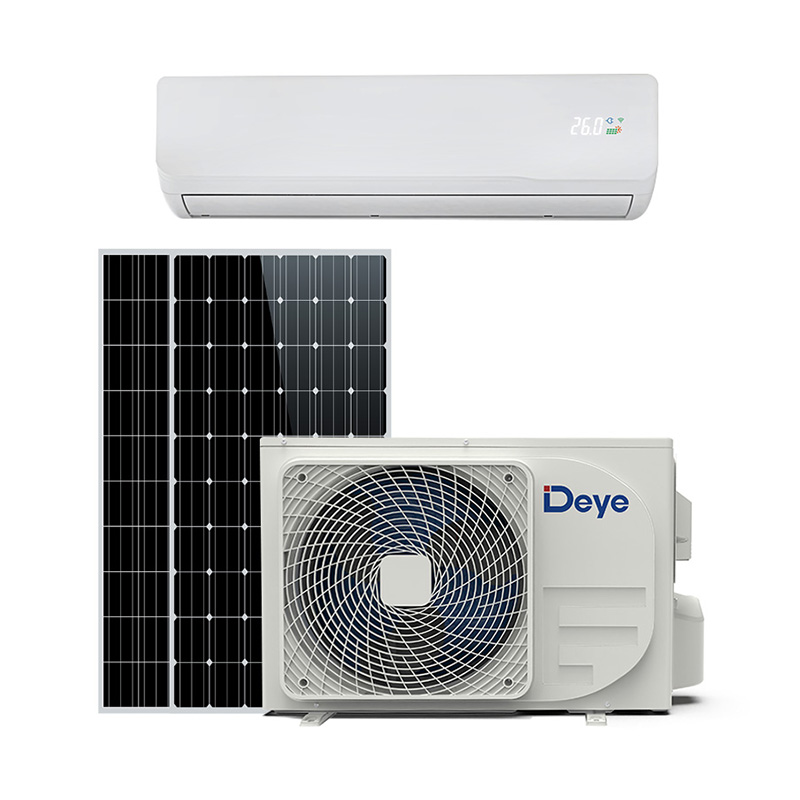
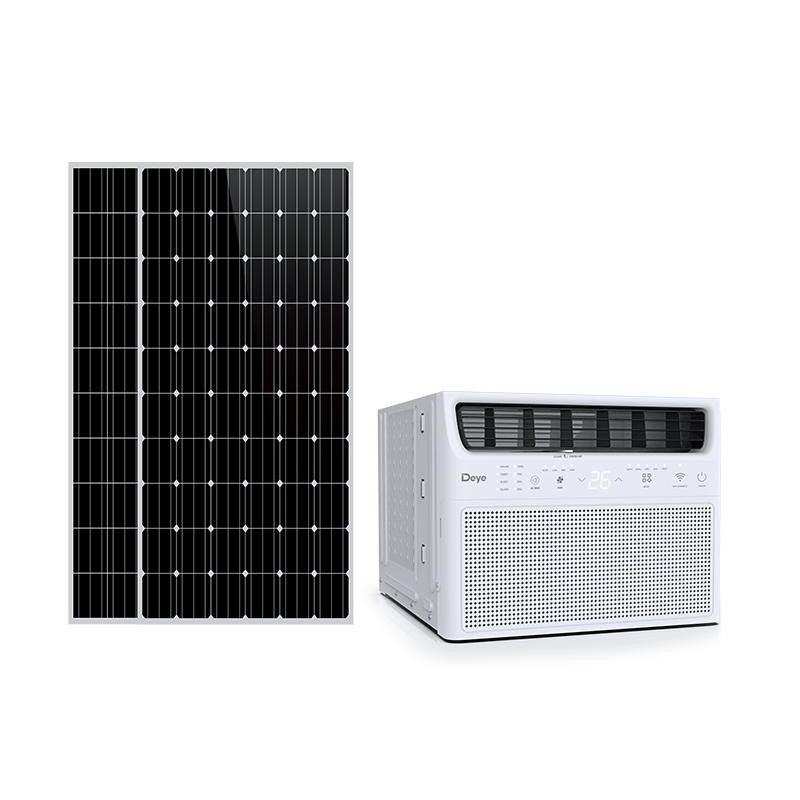
-1.jpg)



